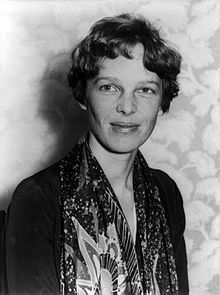Researchers to launch expedition to find remains of Amelia Earhart
Sunday, July 15, 2007

Fifteen researchers are planning to take part in a new expedition in an attempt to solve the 70 year-old mystery of Amelia Earhart, a female pilot who disappeared in 1937 after an attempt to fly around the globe.
The team will be lead by Ric Gillespie, a researcher at The International Group for Historic Aircraft Recovery, who plans on searching the uninhabited island of Nikumaroro for the remains of Earhart's plane and her navigator, Fred Noonan.
"You can sit around and write books and kick theories around all day. In the end, in archeology, the ground will tell you the truth," said Gillespie's wife, Pat Thrasher.

In 1937, Nikumaroro was known as Garner Island, and Gillespie believes that Earhart's plane crashed on the island while Earhart was trying to fly around the globe in her Lockheed 10E Electra. Earhart was supposed to finish her journey and land on Howland Island, but never arrived, and to this day, no trace of her remains or Noonan's, or of the plane have ever been found, but some remains of skeletons found in 1940, pieces of woman shoes and equipment have been recovered in previous trips to the island and Gillespie says that those remains are consistent with Earhart and what her plane would have been carrying at the time it disappeared.
The new expedition is centered around radio distress calls that are said to have been made by Earhart just before her plane went missing, but many researchers consider the transmissions an elaborate hoax. However; Gillespie says that when Earhart's plane ran out of fuel, Nikumaroro Island would have been the closest place to land. Nikumaroro is approximately 2½ miles long, and about 350 miles south of Howland Island. Gillespie says that both Earhart and Noonan would likely have survived "weeks or months" after the crash, but later died of starvation, lack of fresh water, or may have been severely ill.
The team hopes to begin the trip at the end of July or early August, not long after July 24, which is the 110th anniversary of Earhart's birth, and coincides with her disappearance on July 2, 1937. The expedition will take approximately 17 days to complete.
Sources
edit- "Atoll targeted in latest Earhart search" — ImediNews, July 14, 2007
- David Klepper. "Expedition takes another crack at solving the Earhart mystery" — Kansas City Star, July 13, 2007
- "The Search For Amelia Earhart" — Today's THV, July 12, 2007